-
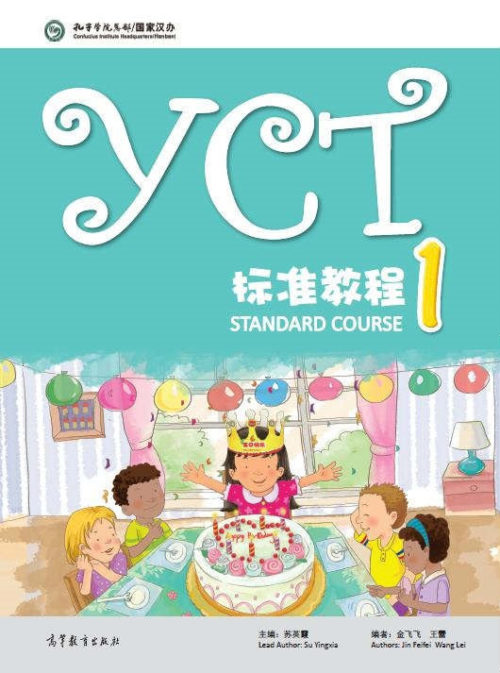 中小学生汉语考试(YCT)是一项国际汉语能力标准化考试,考查汉语非第1语言的中小学生在日常生活和学习中运用汉语的能力。在真题分析的基础上,本着“考教结合”的理念《YCT标准教程(1)》应运而生。 The Youth Chinese Test (YCT) is an international standardised Chinese language proficiency test that tests the ability of primary and secondary school students whose Chinese is not their first language to use Chinese in their daily lives and studies. The YCT Standard Course (1) textbook has been developed based on the analysis of the exam questions and the concept of "teaching and learning together".
中小学生汉语考试(YCT)是一项国际汉语能力标准化考试,考查汉语非第1语言的中小学生在日常生活和学习中运用汉语的能力。在真题分析的基础上,本着“考教结合”的理念《YCT标准教程(1)》应运而生。 The Youth Chinese Test (YCT) is an international standardised Chinese language proficiency test that tests the ability of primary and secondary school students whose Chinese is not their first language to use Chinese in their daily lives and studies. The YCT Standard Course (1) textbook has been developed based on the analysis of the exam questions and the concept of "teaching and learning together". -
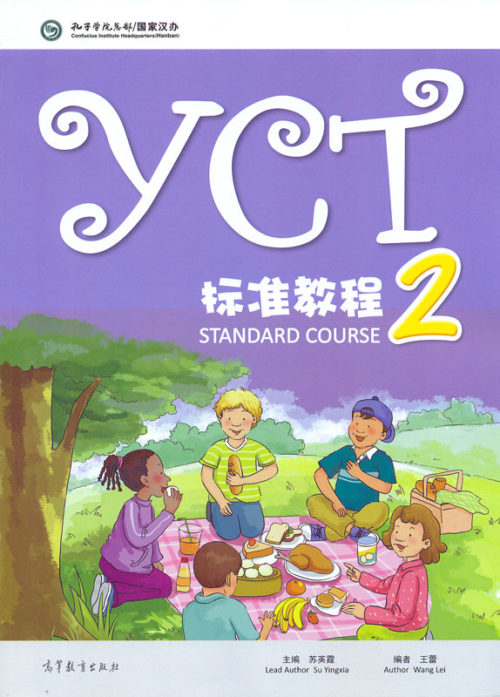 中小学生汉语考试(YCT)是一项国际汉语能力标准化考试,考查汉语非第1语言的中小学生在日常生活和学习中运用汉语的能力。在真题分析的基础上,本着“考教结合”的理念《YCT标准教程(2)》应运而生。 The Youth Chinese Test (YCT) is an international standardised Chinese language proficiency test that tests the ability of primary and secondary school students whose Chinese is not their first language to use Chinese in their daily lives and studies. The YCT Standard Course (2) textbook has been developed based on the analysis of the exam questions and the concept of "teaching and learning together".
中小学生汉语考试(YCT)是一项国际汉语能力标准化考试,考查汉语非第1语言的中小学生在日常生活和学习中运用汉语的能力。在真题分析的基础上,本着“考教结合”的理念《YCT标准教程(2)》应运而生。 The Youth Chinese Test (YCT) is an international standardised Chinese language proficiency test that tests the ability of primary and secondary school students whose Chinese is not their first language to use Chinese in their daily lives and studies. The YCT Standard Course (2) textbook has been developed based on the analysis of the exam questions and the concept of "teaching and learning together". -
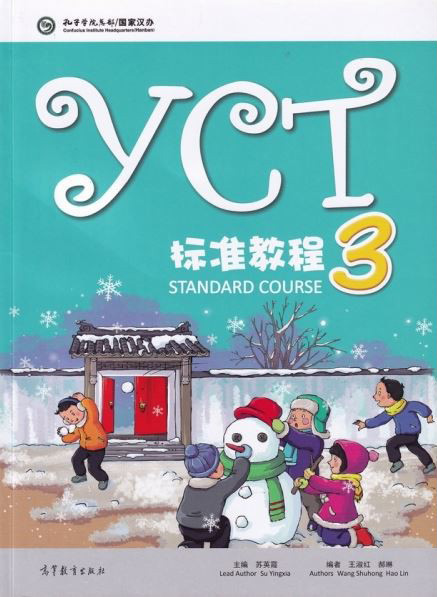 中小学生汉语考试(YCT)是一项国际汉语能力标准化考试,考查汉语非第1语言的中小学生在日常生活和学习中运用汉语的能力。在真题分析的基础上,本着“考教结合”的理念《YCT标准教程(3)》应运而生。 The Youth Chinese Test (YCT) is an international standardised Chinese language proficiency test that tests the ability of primary and secondary school students whose Chinese is not their first language to use Chinese in their daily lives and studies. The YCT Standard Course (3) textbook has been developed based on the analysis of the exam questions and the concept of "teaching and learning together".
中小学生汉语考试(YCT)是一项国际汉语能力标准化考试,考查汉语非第1语言的中小学生在日常生活和学习中运用汉语的能力。在真题分析的基础上,本着“考教结合”的理念《YCT标准教程(3)》应运而生。 The Youth Chinese Test (YCT) is an international standardised Chinese language proficiency test that tests the ability of primary and secondary school students whose Chinese is not their first language to use Chinese in their daily lives and studies. The YCT Standard Course (3) textbook has been developed based on the analysis of the exam questions and the concept of "teaching and learning together". -
 中小学生汉语考试(YCT)是一项国际汉语能力标准化考试,考查汉语非第1语言的中小学生在日常生活和学习中运用汉语的能力。在真题分析的基础上,本着“考教结合”的理念《YCT标准教程(4)》应运而生。 The Youth Chinese Test (YCT) is an international standardised Chinese language proficiency test that tests the ability of primary and secondary school students whose Chinese is not their first language to use Chinese in their daily lives and studies. The YCT Standard Course (4) textbook has been developed based on the analysis of the exam questions and the concept of "teaching and learning together".
中小学生汉语考试(YCT)是一项国际汉语能力标准化考试,考查汉语非第1语言的中小学生在日常生活和学习中运用汉语的能力。在真题分析的基础上,本着“考教结合”的理念《YCT标准教程(4)》应运而生。 The Youth Chinese Test (YCT) is an international standardised Chinese language proficiency test that tests the ability of primary and secondary school students whose Chinese is not their first language to use Chinese in their daily lives and studies. The YCT Standard Course (4) textbook has been developed based on the analysis of the exam questions and the concept of "teaching and learning together". -
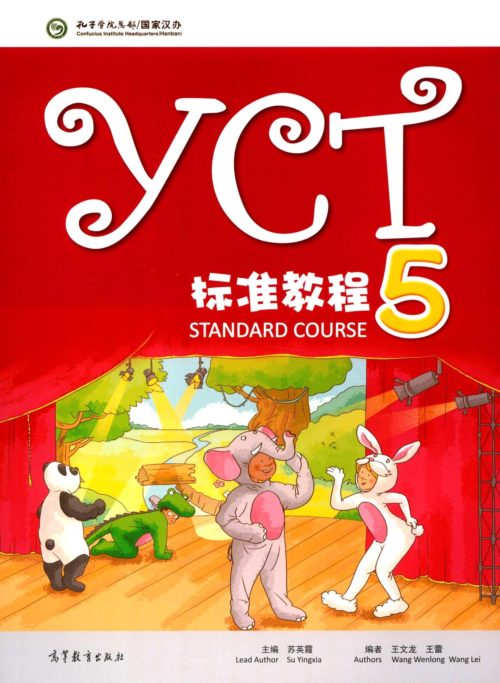 中小学生汉语考试(YCT)是一项国际汉语能力标准化考试,考查汉语非第1语言的中小学生在日常生活和学习中运用汉语的能力。在真题分析的基础上,本着“考教结合”的理念《YCT标准教程(5)》应运而生。 The Youth Chinese Test (YCT) is an international standardised Chinese language proficiency test that tests the ability of primary and secondary school students whose Chinese is not their first language to use Chinese in their daily lives and studies. The YCT Standard Course (5) textbook has been developed based on the analysis of the exam questions and the concept of "teaching and learning together".
中小学生汉语考试(YCT)是一项国际汉语能力标准化考试,考查汉语非第1语言的中小学生在日常生活和学习中运用汉语的能力。在真题分析的基础上,本着“考教结合”的理念《YCT标准教程(5)》应运而生。 The Youth Chinese Test (YCT) is an international standardised Chinese language proficiency test that tests the ability of primary and secondary school students whose Chinese is not their first language to use Chinese in their daily lives and studies. The YCT Standard Course (5) textbook has been developed based on the analysis of the exam questions and the concept of "teaching and learning together". -
 中小学生汉语考试(YCT)是一项国际汉语能力标准化考试,考查汉语非第1语言的中小学生在日常生活和学习中运用汉语的能力。在真题分析的基础上,本着“考教结合”的理念《YCT标准教程(6)》应运而生。 The Youth Chinese Test (YCT) is an international standardised Chinese language proficiency test that tests the ability of primary and secondary school students whose Chinese is not their first language to use Chinese in their daily lives and studies. The YCT Standard Course (6) textbook has been developed based on the analysis of the exam questions and the concept of "teaching and learning together".
中小学生汉语考试(YCT)是一项国际汉语能力标准化考试,考查汉语非第1语言的中小学生在日常生活和学习中运用汉语的能力。在真题分析的基础上,本着“考教结合”的理念《YCT标准教程(6)》应运而生。 The Youth Chinese Test (YCT) is an international standardised Chinese language proficiency test that tests the ability of primary and secondary school students whose Chinese is not their first language to use Chinese in their daily lives and studies. The YCT Standard Course (6) textbook has been developed based on the analysis of the exam questions and the concept of "teaching and learning together". -
 中小学生汉语考试(YCT)自2010年实施以来,更加关注汉语非第一语言的学习者综合能力的培养,多元智能发展的培养。《YCT考试大纲与应考指南》是基于《YCT考试大纲(2009版)》的一次修订。本次修订继续遵循“考教结合”的理念,根据主题式教学和任务型教学的理论及方法,以交际话题和语言任务为引领,重点描述学生在每一级别的词语、语言点限定内“能做(can do)”什么,建议在实际教学中,整体培养学习者的交际能力和语言综合运用能力。 Since its implementation in 2010, the Youth Chinese Test (YCT) has paid more attention to the cultivation of comprehensive abilities and the development of multiple intelligences for learners whose Chinese is not their first language. The YCT Syllabus and Examination Guide is a revision of the YCT Syllabus (2009 Edition). The revision continues to follow the concept of 'teaching and learning together', and is based on the theories and methods of topic-based teaching and task-based teaching, using communicative topics and language tasks as a guide. It is recommended that in practice, learners develop their communicative competence and their ability to use the language as a whole.
中小学生汉语考试(YCT)自2010年实施以来,更加关注汉语非第一语言的学习者综合能力的培养,多元智能发展的培养。《YCT考试大纲与应考指南》是基于《YCT考试大纲(2009版)》的一次修订。本次修订继续遵循“考教结合”的理念,根据主题式教学和任务型教学的理论及方法,以交际话题和语言任务为引领,重点描述学生在每一级别的词语、语言点限定内“能做(can do)”什么,建议在实际教学中,整体培养学习者的交际能力和语言综合运用能力。 Since its implementation in 2010, the Youth Chinese Test (YCT) has paid more attention to the cultivation of comprehensive abilities and the development of multiple intelligences for learners whose Chinese is not their first language. The YCT Syllabus and Examination Guide is a revision of the YCT Syllabus (2009 Edition). The revision continues to follow the concept of 'teaching and learning together', and is based on the theories and methods of topic-based teaching and task-based teaching, using communicative topics and language tasks as a guide. It is recommended that in practice, learners develop their communicative competence and their ability to use the language as a whole. -
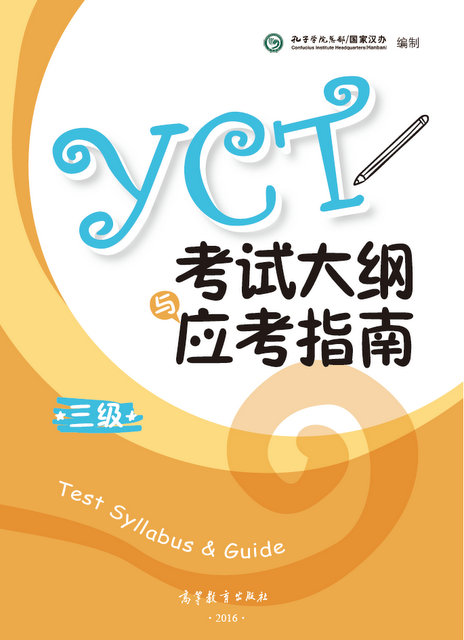 中小学生汉语考试(YCT)自2010年实施以来,更加关注汉语非第一语言的学习者综合能力的培养,多元智能发展的培养。《YCT考试大纲与应考指南》是基于《YCT考试大纲(2009版)》的一次修订。本次修订继续遵循“考教结合”的理念,根据主题式教学和任务型教学的理论及方法,以交际话题和语言任务为引领,重点描述学生在每一级别的词语、语言点限定内“能做(can do)”什么,建议在实际教学中,整体培养学习者的交际能力和语言综合运用能力。 Since its implementation in 2010, the Youth Chinese Test (YCT) has paid more attention to the cultivation of comprehensive abilities and the development of multiple intelligences for learners whose Chinese is not their first language. The YCT Syllabus and Examination Guide is a revision of the YCT Syllabus (2009 Edition). The revision continues to follow the concept of 'teaching and learning together', and is based on the theories and methods of topic-based teaching and task-based teaching, using communicative topics and language tasks as a guide. It is recommended that in practice, learners develop their communicative competence and their ability to use the language as a whole.
中小学生汉语考试(YCT)自2010年实施以来,更加关注汉语非第一语言的学习者综合能力的培养,多元智能发展的培养。《YCT考试大纲与应考指南》是基于《YCT考试大纲(2009版)》的一次修订。本次修订继续遵循“考教结合”的理念,根据主题式教学和任务型教学的理论及方法,以交际话题和语言任务为引领,重点描述学生在每一级别的词语、语言点限定内“能做(can do)”什么,建议在实际教学中,整体培养学习者的交际能力和语言综合运用能力。 Since its implementation in 2010, the Youth Chinese Test (YCT) has paid more attention to the cultivation of comprehensive abilities and the development of multiple intelligences for learners whose Chinese is not their first language. The YCT Syllabus and Examination Guide is a revision of the YCT Syllabus (2009 Edition). The revision continues to follow the concept of 'teaching and learning together', and is based on the theories and methods of topic-based teaching and task-based teaching, using communicative topics and language tasks as a guide. It is recommended that in practice, learners develop their communicative competence and their ability to use the language as a whole. -
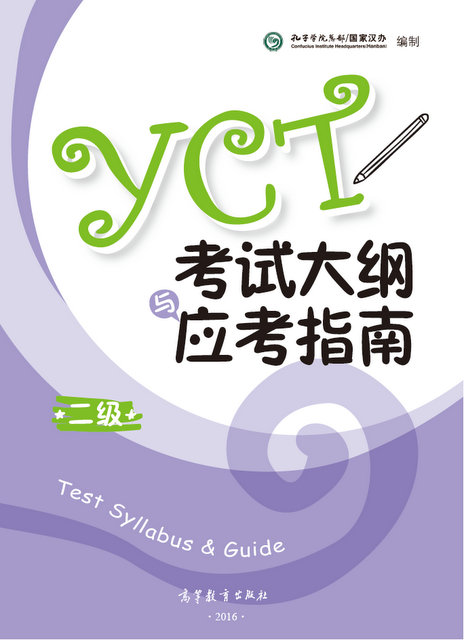 中小学生汉语考试(YCT)自2010年实施以来,更加关注汉语非第一语言的学习者综合能力的培养,多元智能发展的培养。《YCT考试大纲与应考指南》是基于《YCT考试大纲(2009版)》的一次修订。本次修订继续遵循“考教结合”的理念,根据主题式教学和任务型教学的理论及方法,以交际话题和语言任务为引领,重点描述学生在每一级别的词语、语言点限定内“能做(can do)”什么,建议在实际教学中,整体培养学习者的交际能力和语言综合运用能力。 Since its implementation in 2010, the Youth Chinese Test (YCT) has paid more attention to the cultivation of comprehensive abilities and the development of multiple intelligences for learners whose Chinese is not their first language. The YCT Syllabus and Examination Guide is a revision of the YCT Syllabus (2009 Edition). The revision continues to follow the concept of 'teaching and learning together', and is based on the theories and methods of topic-based teaching and task-based teaching, using communicative topics and language tasks as a guide. It is recommended that in practice, learners develop their communicative competence and their ability to use the language as a whole.
中小学生汉语考试(YCT)自2010年实施以来,更加关注汉语非第一语言的学习者综合能力的培养,多元智能发展的培养。《YCT考试大纲与应考指南》是基于《YCT考试大纲(2009版)》的一次修订。本次修订继续遵循“考教结合”的理念,根据主题式教学和任务型教学的理论及方法,以交际话题和语言任务为引领,重点描述学生在每一级别的词语、语言点限定内“能做(can do)”什么,建议在实际教学中,整体培养学习者的交际能力和语言综合运用能力。 Since its implementation in 2010, the Youth Chinese Test (YCT) has paid more attention to the cultivation of comprehensive abilities and the development of multiple intelligences for learners whose Chinese is not their first language. The YCT Syllabus and Examination Guide is a revision of the YCT Syllabus (2009 Edition). The revision continues to follow the concept of 'teaching and learning together', and is based on the theories and methods of topic-based teaching and task-based teaching, using communicative topics and language tasks as a guide. It is recommended that in practice, learners develop their communicative competence and their ability to use the language as a whole. -
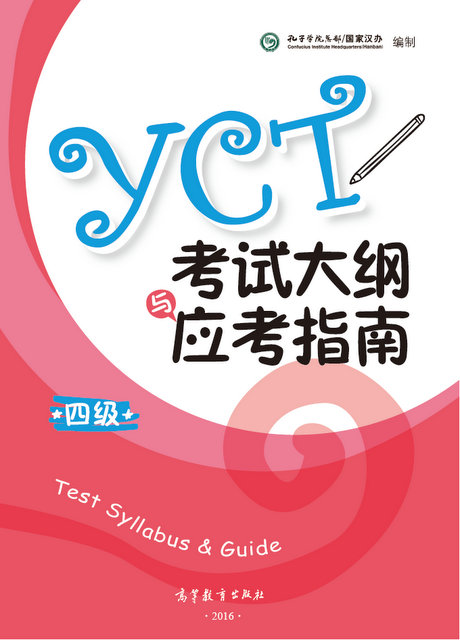 中小学生汉语考试(YCT)自2010年实施以来,更加关注汉语非第一语言的学习者综合能力的培养,多元智能发展的培养。《YCT考试大纲与应考指南》是基于《YCT考试大纲(2009版)》的一次修订。本次修订继续遵循“考教结合”的理念,根据主题式教学和任务型教学的理论及方法,以交际话题和语言任务为引领,重点描述学生在每一级别的词语、语言点限定内“能做(can do)”什么,建议在实际教学中,整体培养学习者的交际能力和语言综合运用能力。 Since its implementation in 2010, the Youth Chinese Test (YCT) has paid more attention to the cultivation of comprehensive abilities and the development of multiple intelligences for learners whose Chinese is not their first language. The YCT Syllabus and Examination Guide is a revision of the YCT Syllabus (2009 Edition). The revision continues to follow the concept of 'teaching and learning together', and is based on the theories and methods of topic-based teaching and task-based teaching, using communicative topics and language tasks as a guide. It is recommended that in practice, learners develop their communicative competence and their ability to use the language as a whole.
中小学生汉语考试(YCT)自2010年实施以来,更加关注汉语非第一语言的学习者综合能力的培养,多元智能发展的培养。《YCT考试大纲与应考指南》是基于《YCT考试大纲(2009版)》的一次修订。本次修订继续遵循“考教结合”的理念,根据主题式教学和任务型教学的理论及方法,以交际话题和语言任务为引领,重点描述学生在每一级别的词语、语言点限定内“能做(can do)”什么,建议在实际教学中,整体培养学习者的交际能力和语言综合运用能力。 Since its implementation in 2010, the Youth Chinese Test (YCT) has paid more attention to the cultivation of comprehensive abilities and the development of multiple intelligences for learners whose Chinese is not their first language. The YCT Syllabus and Examination Guide is a revision of the YCT Syllabus (2009 Edition). The revision continues to follow the concept of 'teaching and learning together', and is based on the theories and methods of topic-based teaching and task-based teaching, using communicative topics and language tasks as a guide. It is recommended that in practice, learners develop their communicative competence and their ability to use the language as a whole. -
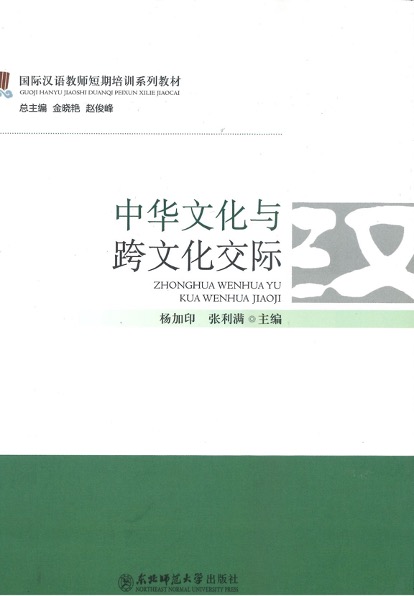 《国际汉语教师短期培训系列教材 中华文化与跨文化交际》共分三部分,部分为中华文化,共十章,分别为绪论、中国姓氏与名字号、中国古代学术思想、中国古代典籍藏书、中国古代教育、中国宗教信仰、中国古代科技成就、中国古代艺术、中国的风俗习惯、中国文学等 第二部分为中国国情,共五章,分别为国土资源、历史发展、中国的行政区划、人口与民族、当代中国的政治制度等 第三部分为跨文化交际,共四章,分别为绪论、影响跨文化交际的因素及主要障碍、跨文化适应与国际汉语教学、跨文化交际的策略与方法等。正文中有多项案例及思考题,书后配有模拟题及答案。 Chinese Culture and Intercultural Communication is divided into three parts: Chinese Culture, with ten chapters, including Introduction, Chinese Surnames and Names, Ancient Chinese Academic Thought, Ancient Chinese Canonical Collections, Ancient Chinese Education, Chinese Religious Beliefs, Ancient Chinese Scientific and Technological Achievements, Ancient Chinese Art, Chinese Customs and Traditions, Chinese Literature, etc. There are five chapters on national resources, historical development, China's administrative divisions, population and ethnic groups, and the political system of contemporary China, etc. The third part is on intercultural communication, with four chapters on introduction, factors and major obstacles affecting intercultural communication, intercultural adaptation and international Chinese language teaching, and strategies and methods of intercultural communication. There are a number of case studies and reflection questions in the main text, and mock questions and answers at the back of the book.
《国际汉语教师短期培训系列教材 中华文化与跨文化交际》共分三部分,部分为中华文化,共十章,分别为绪论、中国姓氏与名字号、中国古代学术思想、中国古代典籍藏书、中国古代教育、中国宗教信仰、中国古代科技成就、中国古代艺术、中国的风俗习惯、中国文学等 第二部分为中国国情,共五章,分别为国土资源、历史发展、中国的行政区划、人口与民族、当代中国的政治制度等 第三部分为跨文化交际,共四章,分别为绪论、影响跨文化交际的因素及主要障碍、跨文化适应与国际汉语教学、跨文化交际的策略与方法等。正文中有多项案例及思考题,书后配有模拟题及答案。 Chinese Culture and Intercultural Communication is divided into three parts: Chinese Culture, with ten chapters, including Introduction, Chinese Surnames and Names, Ancient Chinese Academic Thought, Ancient Chinese Canonical Collections, Ancient Chinese Education, Chinese Religious Beliefs, Ancient Chinese Scientific and Technological Achievements, Ancient Chinese Art, Chinese Customs and Traditions, Chinese Literature, etc. There are five chapters on national resources, historical development, China's administrative divisions, population and ethnic groups, and the political system of contemporary China, etc. The third part is on intercultural communication, with four chapters on introduction, factors and major obstacles affecting intercultural communication, intercultural adaptation and international Chinese language teaching, and strategies and methods of intercultural communication. There are a number of case studies and reflection questions in the main text, and mock questions and answers at the back of the book. -
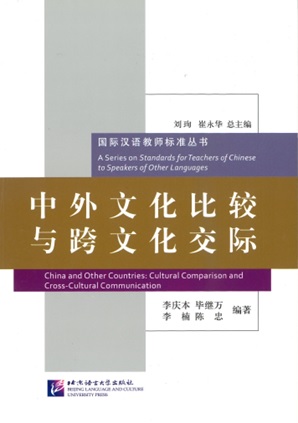 本书根据国家汉办发布的《国际汉语教师标准》中的“标准四:中外文化比较与跨文化交际”编写而成,旨在帮助国际汉语教师了解中外文化的主要异同,理解跨文化交际的主要概念,以及文化、跨文化对语言教与学的影响,并将上述理论和知识应用于教学实践中。 全书共分八章,分别介绍了中外文明的特点和历史,世界主要哲学派别及代表人物,国外汉学研究,中外社会价值观及国外主要文化风俗,跨文化交际学与第二语言教学之间的关系,语用学与语言教学的关系等相关内容。本书内容的选取、论述的角度以及课后“思考与练习”部分的设计,都与国际汉语教师的教学实践紧密相连,具有较强的可操作性和针对性。 This book is based on Standard IV: Comparison of Chinese and Foreign Cultures and Intercultural Communication of the International Standards for Chinese Language Teachers issued by the Hanban. The book is divided into eight chapters. The book is divided into eight chapters, which introduce the characteristics and history of Chinese and foreign civilizations, the major philosophical schools and figures in the world, the study of Chinese studies abroad, Chinese and foreign social values and major foreign cultural customs, the relationship between intercultural communication studies and second language teaching, and the relationship between pragmatics and language teaching. The selection of content, the angle of discussion, and the design of the "Reflections and Exercises" section at the end of the course are closely related to the teaching practice of international Chinese teachers, and are highly operable and relevant.
本书根据国家汉办发布的《国际汉语教师标准》中的“标准四:中外文化比较与跨文化交际”编写而成,旨在帮助国际汉语教师了解中外文化的主要异同,理解跨文化交际的主要概念,以及文化、跨文化对语言教与学的影响,并将上述理论和知识应用于教学实践中。 全书共分八章,分别介绍了中外文明的特点和历史,世界主要哲学派别及代表人物,国外汉学研究,中外社会价值观及国外主要文化风俗,跨文化交际学与第二语言教学之间的关系,语用学与语言教学的关系等相关内容。本书内容的选取、论述的角度以及课后“思考与练习”部分的设计,都与国际汉语教师的教学实践紧密相连,具有较强的可操作性和针对性。 This book is based on Standard IV: Comparison of Chinese and Foreign Cultures and Intercultural Communication of the International Standards for Chinese Language Teachers issued by the Hanban. The book is divided into eight chapters. The book is divided into eight chapters, which introduce the characteristics and history of Chinese and foreign civilizations, the major philosophical schools and figures in the world, the study of Chinese studies abroad, Chinese and foreign social values and major foreign cultural customs, the relationship between intercultural communication studies and second language teaching, and the relationship between pragmatics and language teaching. The selection of content, the angle of discussion, and the design of the "Reflections and Exercises" section at the end of the course are closely related to the teaching practice of international Chinese teachers, and are highly operable and relevant.